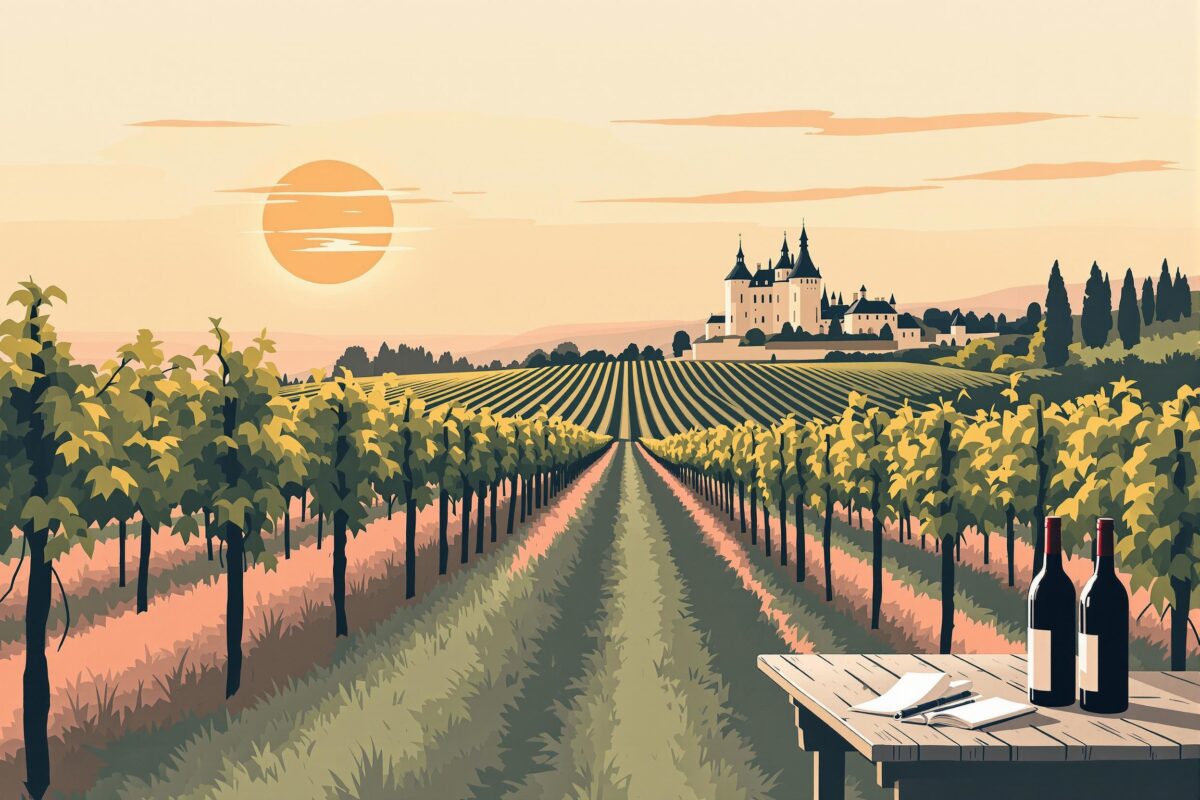The Timeless Allure of French Winemaking
French winemaking is a beacon of tradition, a testament to quality in a world overflowing with vineyards. What sets French wine apart? It’s a deep-rooted connection to the land, an unwavering commitment to viticultural expertise, and a collection of exceptional grape varieties that have captivated palates for centuries. This exploration delves into the heart of French wine regions, unearthing the distinguished grapes that define them.
We’ll uncover the heritage and innovation behind wines cherished globally, from the celebrated Chardonnay to the robust Cabernet Sauvignon. Join us on a journey through prestigious vineyards where terroir and tradition intertwine to craft unparalleled wines.
Exploring Iconic French Grape Varieties: Types, Traits, and Their Wine Profiles
Chardonnay: The Queen of White Wine Grapes
Chardonnay resonates with wine lovers everywhere. In France, it reigns supreme, expressing a remarkable diversity and complexity rarely seen in other varietals. As a primary grape of Burgundy and Champagne, Chardonnay showcases its adaptability, thriving in various climates and soil types.
- From the crisp, mineral-driven wines of Chablis to the rich, buttery textures of Meursault.
- In Champagne, it lends elegance and finesse to sparkling wine, forming the backbone of Blanc de Blancs.
French Chardonnay sets the global standard with flavors ranging from green apple and citrus in cooler climates to peach, melon, and tropical fruit in warmer regions, often complemented by oak-derived vanilla and spice.
Sauvignon Blanc: Crisp Elegance Embodied in White Wine Grapes
Sauvignon Blanc, a star in its own right, thrives in the Loire Valley. Known for its vibrant acidity and intense aromas, Sauvignon Blanc produces remarkable crisp wines.
- Aromas include grassy notes, gooseberry, and hints of citrus and passionfruit.
- Sancerre and Pouilly-Fumé showcase Sauvignon Blanc’s terroir-driven character.
This grape typically sees stainless steel vinification, preserving freshness and aromatic purity, resulting in a steely minerality that enhances elegance.
Pinot Noir: The Noble Red Wine Grape of Burgundy and Beyond
Pinot Noir, a noble grape, achieves iconic status in Burgundy. Its thin skin demands meticulous care, contributing to its lighter color and softer tannins.
- Pinot Noir offers aromas of red fruit, earth, and spice, evolving into savory notes with age.
- While Burgundy remains its heartland, Pinot Noir thrives globally, setting the benchmark for elegance in red wine.
Merlot: Supple and Approachable Red Wine Varieties
Merlot is the cornerstone of Bordeaux blends, known for its soft tannins, plush texture, and approachable fruit-forward character.
- Aromas of plum, cherry, and blackberry, often accompanied by chocolate and spice when aged.
- Merlot adds mid-palate richness in Bordeaux blends, enhancing the overall balance.
Cabernet Sauvignon: The King of Structure Among Red Wine Varieties
Cabernet Sauvignon reigns in Bordeaux’s Médoc region, revered for its structure, intensity, and aging potential.
- Aromas include blackcurrant, blackberry, cedar, tobacco, and even graphite.
- It forms the backbone of many prestigious red wines, particularly in Left Bank appellations like Pauillac and Margaux.
Mapping France: Inside the Country’s Prestigious Wine Regions and Their Offerings
Bordeaux: The Land of Legendary Red Wine Varieties
Bordeaux is famed for its Cabernet Sauvignon and Merlot-based red blends. The Gironde estuary divides the region into the Left Bank and Right Bank.
- The Left Bank emphasizes Cabernet Sauvignon for structured wines.
- The Right Bank focuses on Merlot for softer, more opulent styles.
- Bordeaux also produces dry white wines and sweet wines of Sauternes, showcasing its diversity.
Loire Valley: Diversity in White Wine Grapes and Beyond
The Loire Valley stretches across central and western France, celebrated for its crisp, aromatic white wines.
- Sancerre and Pouilly-Fumé highlight the elegance of Sauvignon Blanc.
- The Central Loire emphasizes Chenin Blanc’s versatility, producing both dry and sweet wines.
Champagne: The Home of Sparkling Wine and Champagne Grape Varieties
Champagne stands alone as the exclusive source of true Champagne. Its cool climate favors Chardonnay, Pinot Noir, and Pinot Meunier.
- Chardonnay lends elegance, while Pinot Noir provides structure.
- Non-vintage Champagne blends multiple vintages, while vintage captures a single harvest’s essence.
The Science and Art of Terroir: How French Landscapes Shape Exceptional Wines
Terroir shapes a wine’s character through the interplay of environmental factors. Soil, climate, topography, and human influence play crucial roles.
French wine regions, defined by terroir, emphasize the link between land and quality.
Modern-Day Winemaking Trends: Innovations, Challenges, and Global Comparisons
French winemaking embraces innovation amid tradition. Challenges of climate change urge adaptations like drought-resistant rootstocks and sustainable practices.
While respecting terroir and tradition, French winemakers engage with international trends, exploring organic and biodynamic viticulture.
Expert French Wine Pairing Tips: Dishes That Match Perfectly
Understanding French grape varieties enhances wine pairing, creating memorable culinary experiences.
- Sauvignon Blanc pairs beautifully with seafood and goat cheese.
- Chardonnay complements roasted chicken and creamy sauces.
- Merlot-based Bordeaux matches roasted meats and grilled steak.
- Cabernet Sauvignon works with rich red meats and aged cheeses.
- Champagne is versatile, pairing with appetizers, seafood, and even desserts.
From iconic grape varieties to prestigious regions, French winemaking continues to inspire wine enthusiasts. Terroir matters, and modern trends coexist with tradition.
